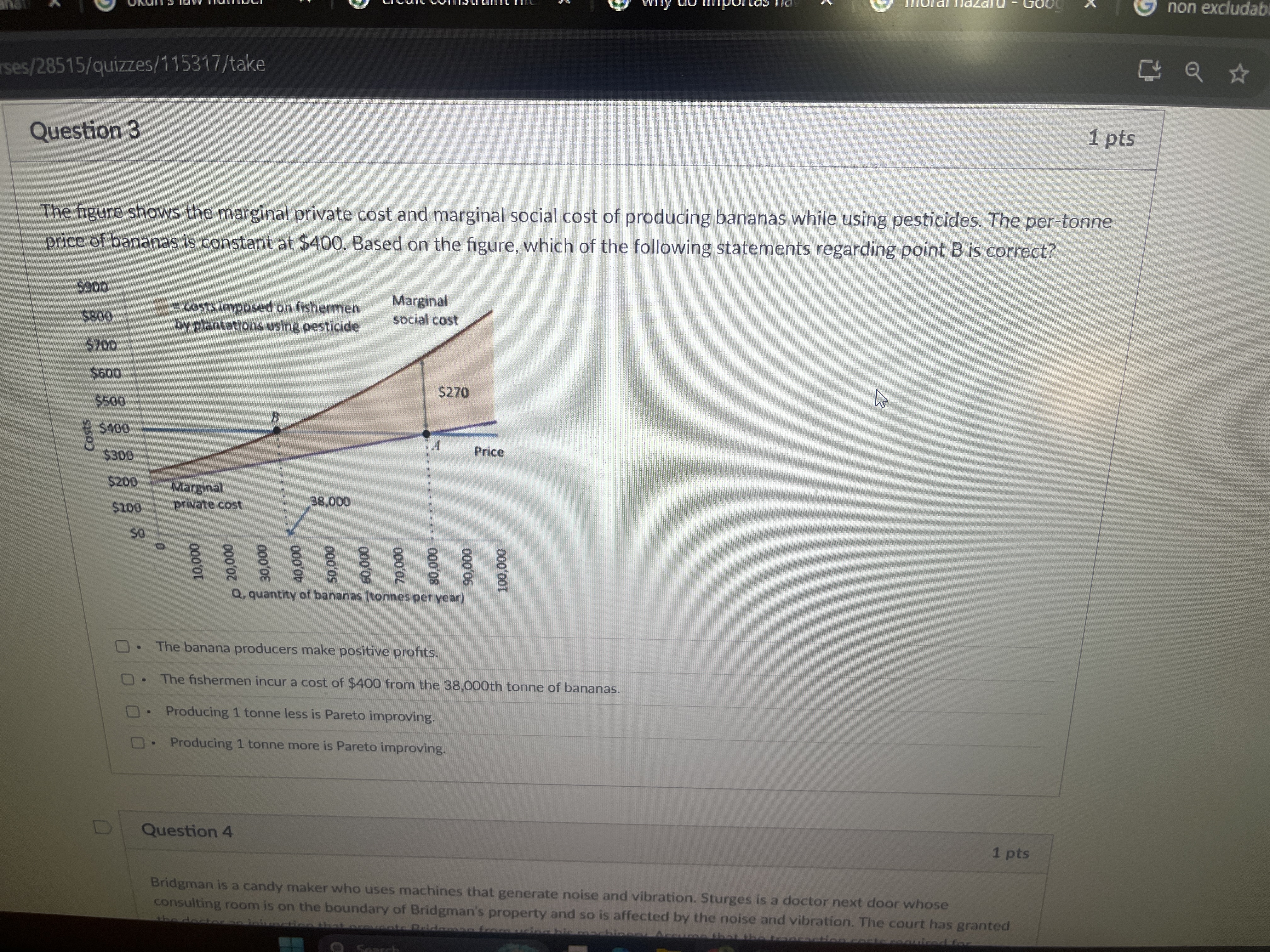The figure shows the marginal private cost and marginal social cost of producing bananas while using pesticides. The per-tonne price of bananas is constant at $400. Based on the fi... The figure shows the marginal private cost and marginal social cost of producing bananas while using pesticides. The per-tonne price of bananas is constant at $400. Based on the figure, which of the following statements regarding point B is correct?

Understand the Problem
This question pertains to economics, specifically concerning market equilibrium, externalities (costs imposed on fishermen by pesticide use), and Pareto efficiency. We're asked to analyze a graph depicting marginal private cost, marginal social cost, and the price of bananas to determine which statement is correct regarding point B (the intersection of the marginal private cost curve and the price line).
Answer
The banana producers make positive profits.
At point B, the banana producers make positive profits because the price ($400) is above the marginal private cost at a production level of 38,000 tonnes.
Answer for screen readers
At point B, the banana producers make positive profits because the price ($400) is above the marginal private cost at a production level of 38,000 tonnes.
More Information
Point B represents the intersection of the marginal private cost curve and the price line. Because the price is constant at $400, and the marginal private cost at 38,000 tonnes is less than $400, the producers are making a profit on each tonne produced up to that point.
Tips
A common mistake is to confuse marginal private cost with marginal social cost. Remember that marginal private cost only considers the costs to the producer, while marginal social cost includes external costs imposed on others.
Sources
AI-generated content may contain errors. Please verify critical information